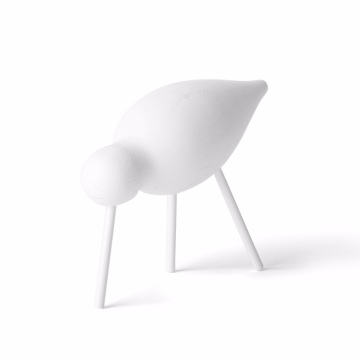Takikomi-Gohan: A Traditional Japanese Mixed Rice Delight
Takikomi-Gohan (炊き込みご飯) is a beloved Japanese dish that combines rice with a variety of ingredients, including vegetables, meats, fish, and seasonings, all cooked together in a single pot. Known for its comforting and earthy flavors, takikomi-gohan is a culinary gem that reflects Japan’s deep respect for seasonal ingredients and the harmony of flavors in one pot. This dish has been a part of Japanese home cooking for centuries and continues to be a staple in traditional meals.
The Origins of Takikomi-Gohan: A Culinary Tradition Rooted in Japan’s Agricultural Heritage
The history of takikomi-gohan can be traced back to ancient Japan, where rice was considered the most important food staple. Rice cultivation has been at the heart of Japanese agriculture for over 2,000 years, with rice serving not only as a primary food source but also as an important cultural and spiritual symbol. In the early days, takikomi-gohan was created as a way to make rice more flavorful and provide a hearty meal using ingredients that were readily available.
The term “takikomi” refers to the process of cooking rice together with other ingredients, allowing the rice to absorb all the flavors during the cooking process. Takikomi-gohan can be seen as a culinary evolution of traditional rice dishes like “osechi-ryori” (New Year's food), which often includes a variety of ingredients mixed together and enjoyed with rice.
Originally, takikomi-gohan was made during the harvest season when fresh seasonal ingredients were abundant. It was a way to celebrate the harvest and create a dish that made use of local, seasonal produce, meats, and fish. Over time, it became a dish enjoyed year-round, especially for family meals and special occasions.
Culinary Composition of Takikomi-Gohan: A Delicious Harmony of Ingredients
The beauty of takikomi-gohan lies in its versatility. It is made by simmering rice along with seasonal ingredients and seasonings that complement each other to create a complex, yet balanced flavor profile. The choice of ingredients varies by region and season, but the basic components of the dish include:
- Rice (Gohan): The heart of the dish. Short-grain Japanese rice is typically used for its stickiness, which allows it to absorb the flavors of the other ingredients.
- Vegetables: Common additions include shiitake mushrooms, carrots, burdock root, kabocha squash, and root vegetables that contribute both flavor and texture. These vegetables help create a umami-rich broth that the rice soaks up during cooking.
- Protein: Chicken, fish (such as salmon or mackerel), or pork are popular proteins added to takikomi-gohan, infusing the rice with savory flavors. Kombu (kelp) and bonito flakes (katsuobushi) may also be used to enhance the dish’s umami depth.
- Seasonings: The rice is typically seasoned with soy sauce, mirin, sake, salt, and dashi broth. This combination of seasonings adds a delicate yet rich flavor that permeates the rice and other ingredients.
- Herbs and Garnishes: A sprinkle of shiso leaves, sesame seeds, or chopped green onions is often added for a refreshing herbal note to balance the savory flavors.
Takikomi-Gohan in Japanese Culinary Culture: A Comforting Dish for All Occasions
Takikomi-gohan is a dish that showcases the principles of Japanese cooking, including the use of seasonal ingredients, the art of balancing flavors, and the practice of simplicity and elegance. It is a dish that has evolved over time, with many regional variations reflecting the local availability of ingredients. Here are a few examples of regional variations of takikomi-gohan:
- Matsutake Takikomi-Gohan: A luxurious version made with matsutake mushrooms, which are prized for their aromatic flavor and delicate texture. This dish is often served during autumn when matsutake mushrooms are in season.
- Kani (Crab) Takikomi-Gohan: A coastal variation that incorporates fresh crab meat, providing a sweet and savory flavor that complements the rice.
- Sakana Takikomi-Gohan: A version made with fresh fish such as salmon, mackerel, or tai (red snapper), making use of seafood to infuse the rice with a rich umami flavor.
- Bento Box Staple: Takikomi-gohan is often included in bento boxes for lunch, where it is enjoyed alongside other dishes such as pickles, egg rolls, and tempura.
In modern Japan, takikomi-gohan is often enjoyed at family gatherings, festive meals, or as a satisfying comfort food when someone is looking for something nourishing yet simple.
Culinary Techniques: How Takikomi-Gohan is Made
Takikomi-gohan is traditionally cooked in a donabe (Japanese clay pot) or rice cooker, ensuring that the rice and ingredients cook evenly while absorbing the seasonings and flavors. Here’s a basic outline of the culinary process:
- Prepare the Ingredients: The vegetables, protein, and any seasonings are prepared and cut into bite-sized pieces. Shiitake mushrooms, for instance, may be rehydrated if dried.
- Soak the Rice: The rice is soaked in water for about 30 minutes before cooking to ensure that it cooks evenly and absorbs the flavors.
- Combine the Ingredients: The soaked rice is placed in the cooking pot along with the protein, vegetables, seasonings (soy sauce, sake, mirin, etc.), and dashi broth or water.
- Cook: The ingredients are cooked together, either on a stovetop or using a rice cooker, until the rice is tender and has absorbed all the flavors of the seasonings.
- Serve: Once cooked, takikomi-gohan is typically served in individual bowls and garnished with fresh herbs or sesame seeds.
Conclusion: Takikomi-Gohan – A Culinary Delight of Tradition and Comfort
Takikomi-gohan is more than just a mixed rice dish; it’s a reflection of the Japanese culinary tradition that values seasonal ingredients, harmony in flavors, and the art of cooking with simplicity and care. As both a comfort food and a special dish for occasions, takikomi-gohan has earned its place as a beloved part of Japanese cuisine. Whether enjoyed in a traditional family meal or modernized with creative ingredients, takikomi-gohan continues to be a delicious reminder of Japan's rich culinary history.




